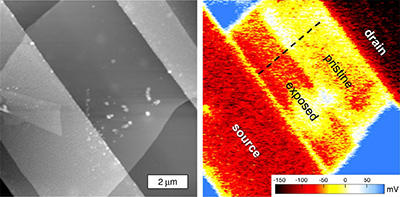12 July 2017
Atomic Force Microscopy is an Essential Tool for Characterizing Graphene and Next-Generation Two-Dimensional Materials

The research boom in the field of two-dimensional materials began with the isolation of graphene in 2004 and shows no signs of subsiding anytime soon. Continued interest in the field is not limited to graphene. New 2D materials and new methods to produce them have helped drive a renewed wave of research. One technique, atomic force microscopy (AFM), has proven to be an essential tool for understanding the unique properties of these materials. A new application note by Oxford Instruments Asylum Research details some recent work in the field of 2D materials with the aim to help researchers understand the wide range of information that AFM can help provide. It can accessed here.
Asylum Research applications scientist Keith Jones explains, “As a high resolution imaging technology, AFM easily measures the single atomic steps that define 2D materials and even their atomic lattice structure. The full potential of AFMs, however, has been demonstrated in their ability to also characterize the electrical, mechanical, and functional properties of 2D materials at the nanoscale. This has allowed AFM to go beyond just topographic structure and help scientists understand the performance of 2D materials in next-generation devices.”
Asylum Research AFMs from both the Cypher and MFP-3D families have been widely used by researchers who need their ultra-high resolution and their unique suite of nanoelectrical and nanomechanical characterization techniques. Asylum’s continuing ease of use developments and a new broader selection of AFM models helps make the best AFMs in the world accessible to all researchers, regardless of their AFM experience or their instrumentation budget.


